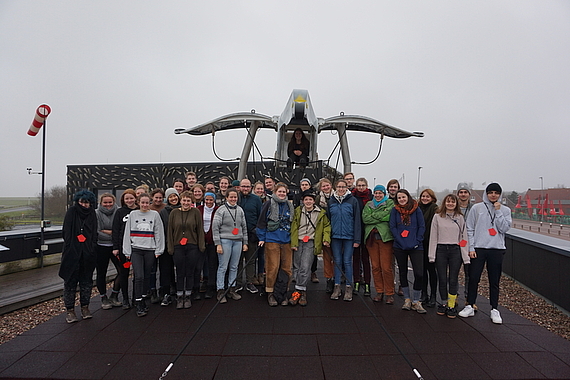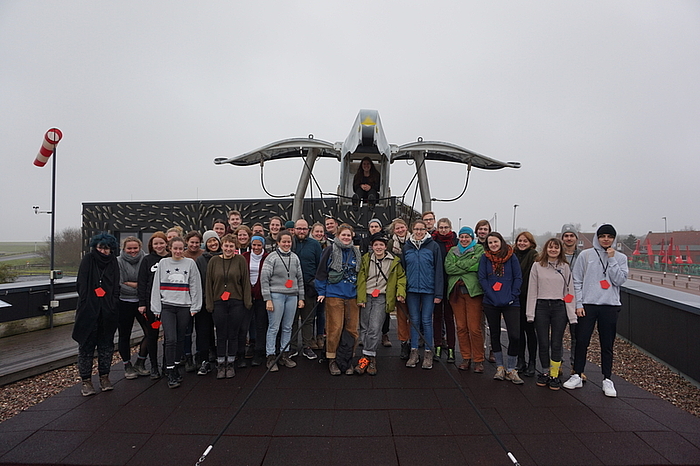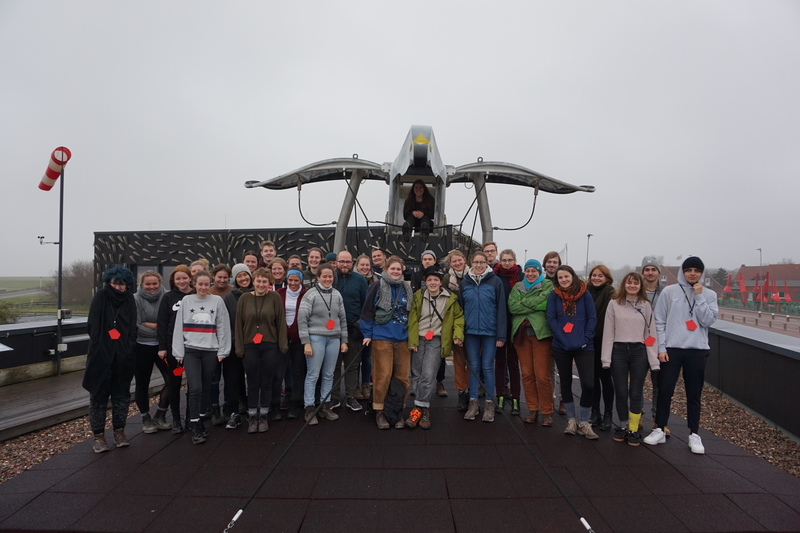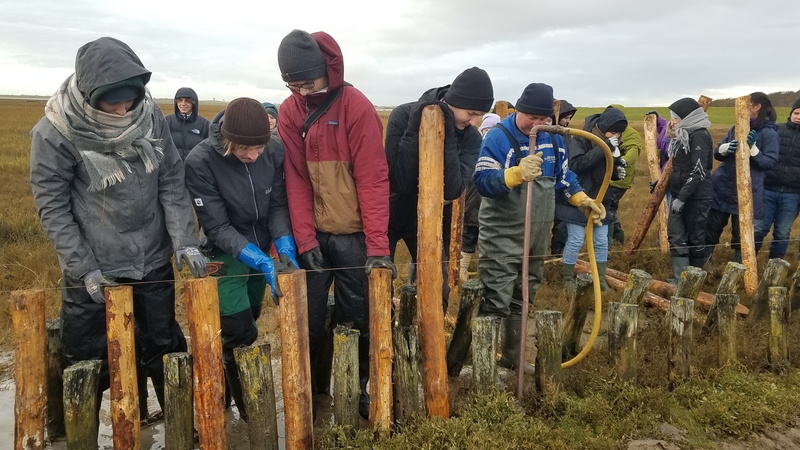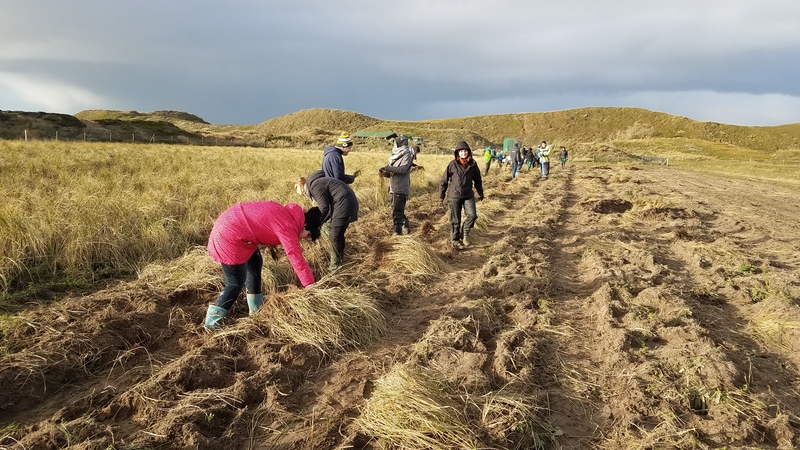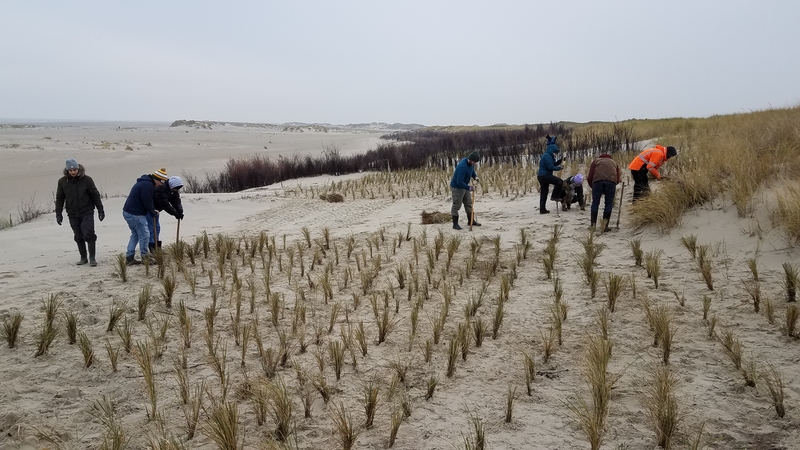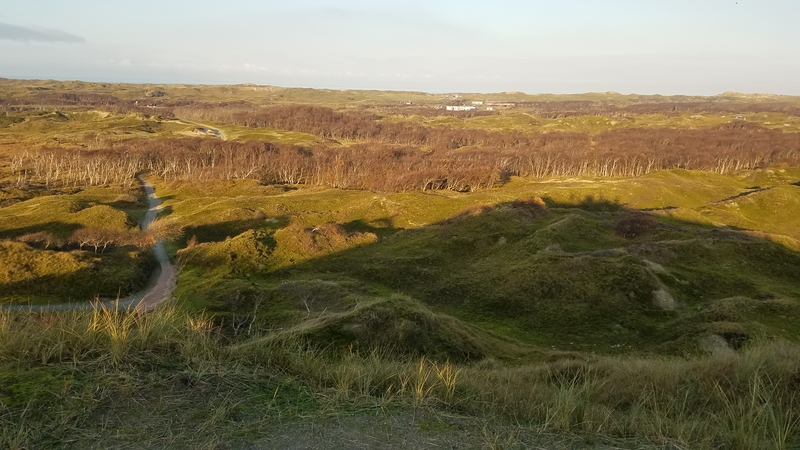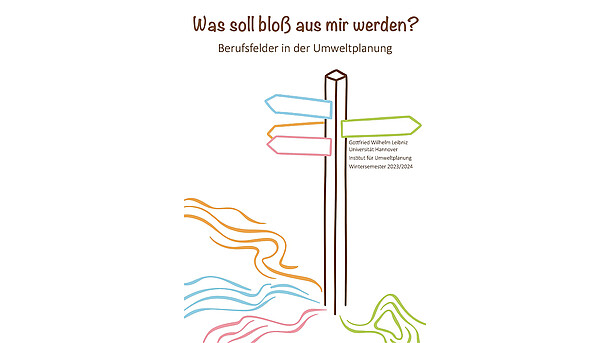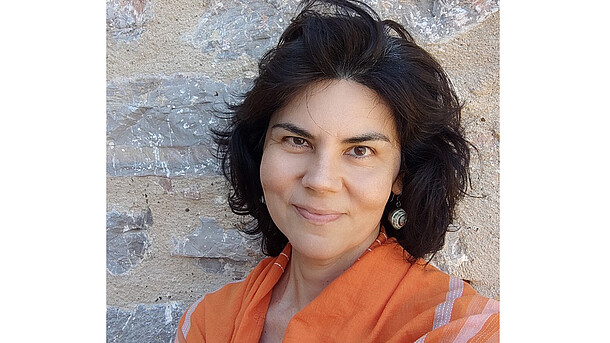The excursion to Norderney took place from 18 to 22 November 2019 and was attended by 33 students. The teaching and research area of engineering biology at the IUP organised the engineering biology construction week in cooperation with the Lower Saxony State Agency for Water Management, Coastal and Nature Conservation (NLWKN). During the excursion, the topics of coastal protection, nature conservation and the Wadden Sea National Park were examined in more detail.
The focus of the construction week was on engineering-biological construction and the construction of coastal protection measures under the guidance of NLWKN staff. They presented the individual construction methods and their effects. The students were then able to implement them themselves and thus experience the challenges of engineering biology in coastal protection. In the south of the island, they helped to repair the bush breakwater in the dyke foreland. In order to preserve the protective dunes in the north of the island, the beach grass was introduced here by the students with the help of stalk cuttings. Beforehand, the plants could be harvested independently under supervision in the unique planting field for beach grass on Norderney.
The salt marshes are considered important biotopes of the Wadden Sea National Park. During a presentation by Mr Linders (Eco Plan planning office), this type of biotope was introduced and the problems that the cultivation and embankment of this habitat have brought with them. The necessity of salt marsh renaturation was pointed out. Various salt marsh restoration projects were presented and the different challenges that arise at different sites. During a subsequent walk-through, the students were able to take a look at the renaturalised salt marshes on the Ostheller. This was led by Mr Linders, whose planning office had carried out the renaturation work in 2015 with the help of biological engineering construction methods. Here, the theoretical and, above all, practical requirements of salt marsh renaturation could be discussed using a practical example, and the developments and successes that can occur on a renaturated salt marsh under dynamic conditions just a few years after the completion of the construction measures could be observed.
During a cycling excursion with national park ranger Frauke Gerlach, Norderney was explored together and hotspots on the island were visited. Tourism in the National Park was also discussed and the conflicts between nature conservation, coastal protection and tourism that have to be dealt with in the National Park. During another cycling excursion along the western head of the island, Svenja Wolf (IUP) explained the different coastal protection measures and construction methods found on the island.
The dunes, which are only protected by vegetation, were examined in detail, as well as the dyke construction and the massive protective structures built with stone and concrete in the west of the island.
During a visit to the National Park House "Watt Welten", the students were able to deepen what they had learned in the interactive exhibition on the Wadden Sea World Heritage Site and once again independently work through and discuss with each other the field of tension in the National Park between nature conservation, coastal protection and tourism.
(All photos: Svenja Wolf)

